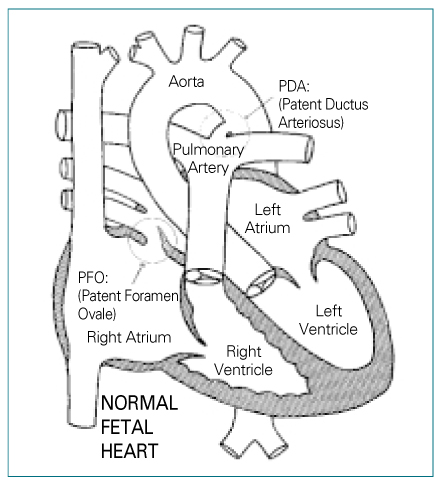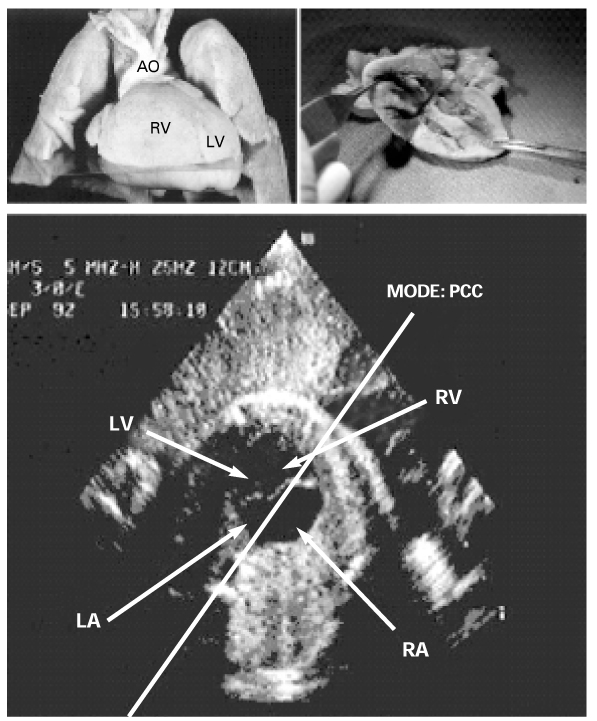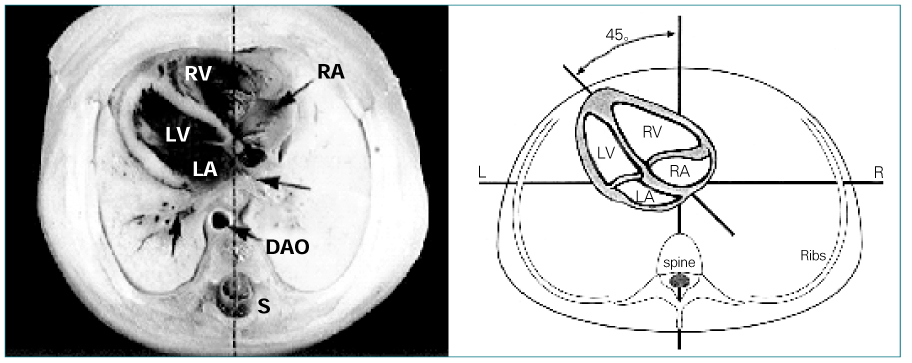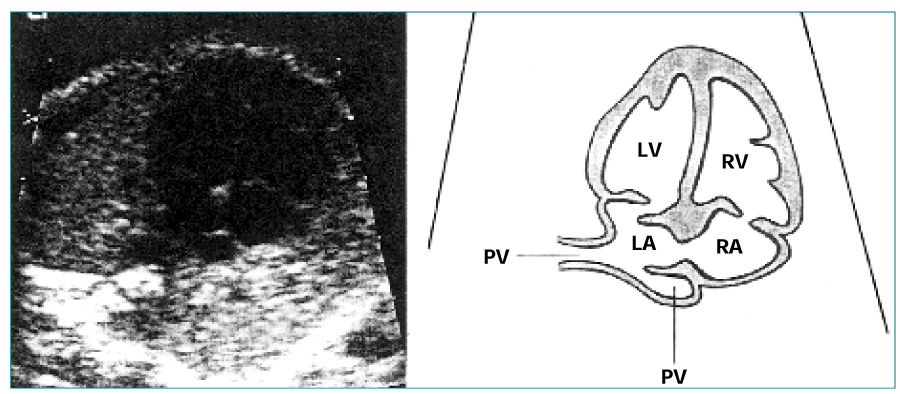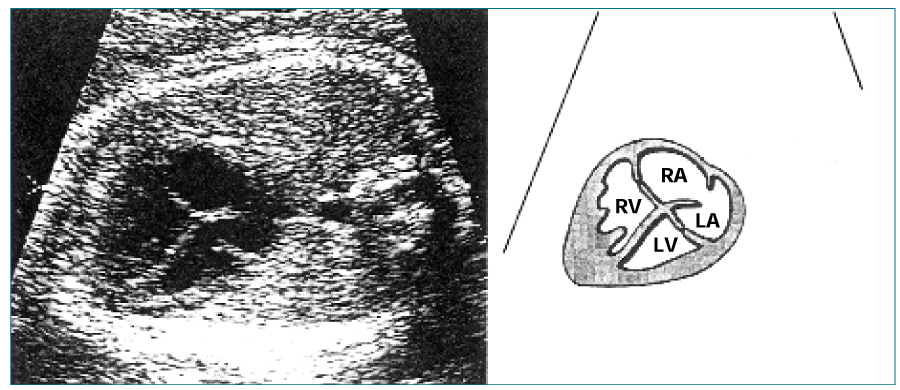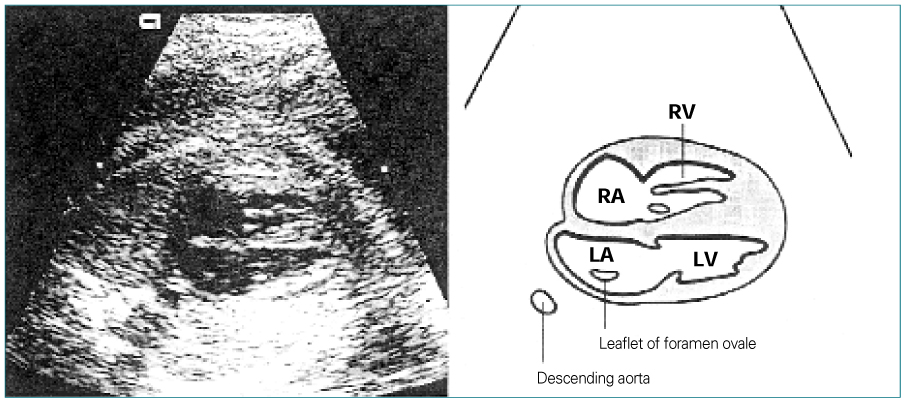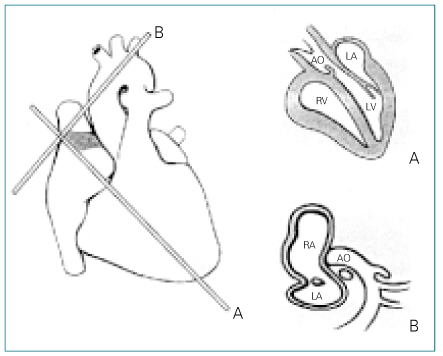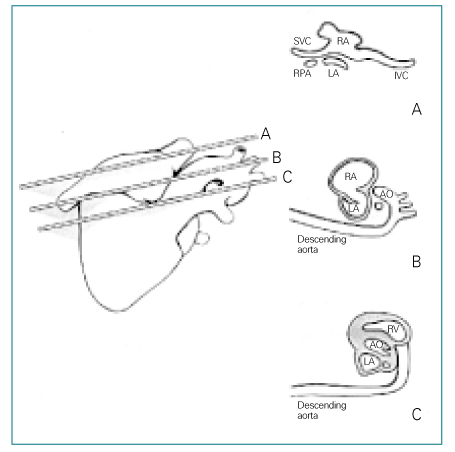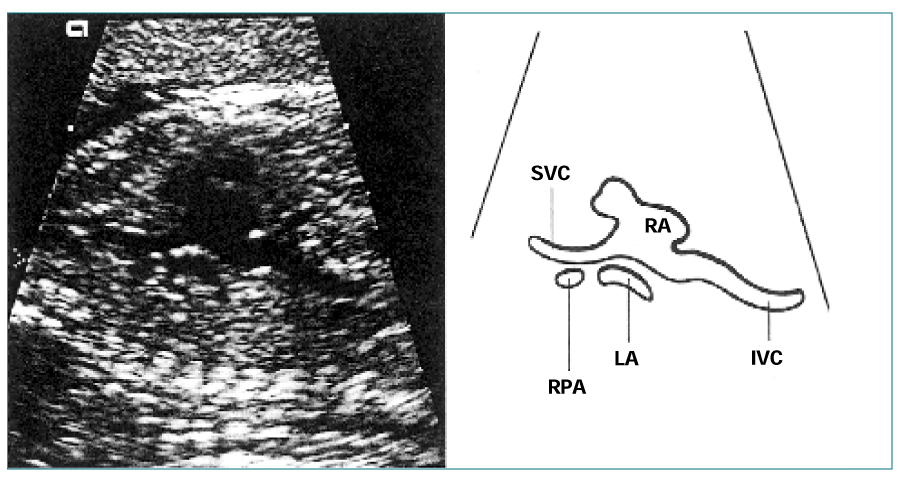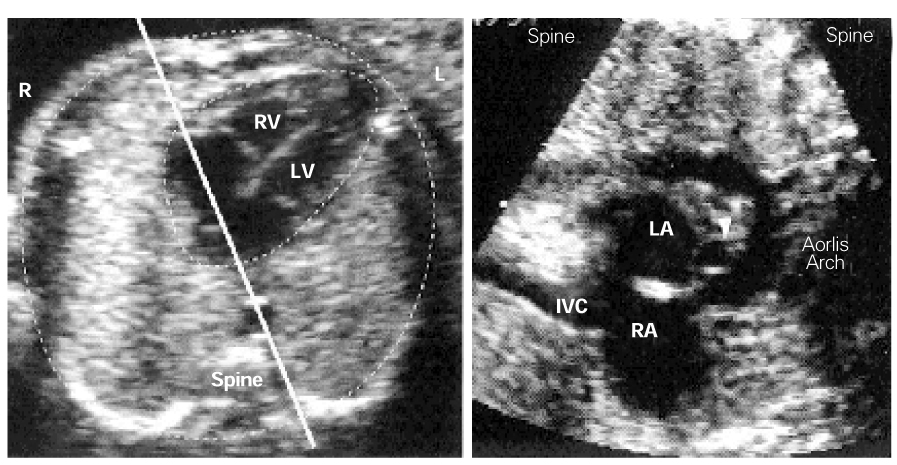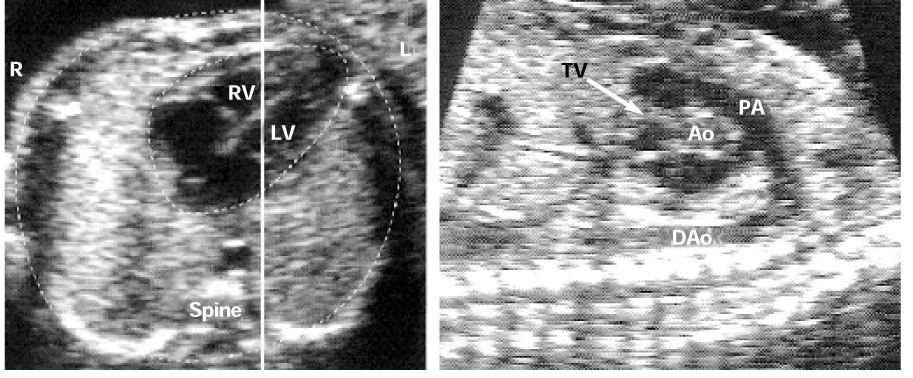J Korean Med Assoc.
2005 Aug;48(8):764-776. 10.5124/jkma.2005.48.8.764.
Fetal Echocardiography
- Affiliations
-
- 1Department of Obstetrics and Gynecology, Chonnam National University Medical School and Hospital, Korea. kimyh@chonnam.ac.kr
- KMID: 2064942
- DOI: http://doi.org/10.5124/jkma.2005.48.8.764
Abstract
- Congenital heart disease(CHD) is the most common congenital abnormality in human fetus, accounting for more than half of deaths from congenital abnormalities in childhood. Fetal echocardiography has been shown to be able to identify the majority of structural cardiac abnormalities, and it has traditionally been reserved for pregnancies at high risk for CHD. Most neonates with CHD, however, have no identifiable risk factors. When a sonogram is performed during pregnancy for defined clinical reasons, a four-chamber view of the fetal heart is routinely performed. However, a four-chamber view of the fetal heart does not reliably detect the most common CHD such as ventricular septal defect, coarctation of the aorta, transposition of the great arteries, and tetralogy of Fallot. Therefore, the vast majority of cases of CHD are left undetected even in those women who have undergone an obstetric ultrasound. A high level of suspicion of the presence of CHD and attention to anatomic details should be part of every ultrasound examination, especially when involving lowrisk pregnancies, and it is currently recommended that only those fetuses with significant risk factors be referred for a targeted sonogram and fetal echocardiogram.
MeSH Terms
Figure
Reference
-
1. Hofman JI, Christian R. Congenital heart disease in a cohort of 19,502 births with long term follow-up. Am J Cardiol. 1978. 42:641–647.2. Lian ZH, Zach MM, Erickson JD. Paternal age and occurrence of birth defects. Am J Hum Genet. 1986. 39:648–660.3. Mitchell SC, Korones SB, Berendes HW. Congenital heart disease in 56,109 births. Circulation. 1971. 43:323–332.4. Ewigman BG, Crane JP, Frigoletto FD, LeFevre ML, Bain RP, McNellis D. RADIUS Study Group. Effect of prenatal ultrasound screening on perinatal outcome. N Engl J Med. 1993. 329:821–821.
Article5. Cullen S, Sharland GK, Allan LD, Sullivan ID. Potential impact of population screening for prenatal diagnosis of congenital heart disease. Arch Dis Child. 1992. 67:775–778.
Article6. Chitlin MD, Alpert JS, Armstrong WF, Aurigemma GP, Beller GA, Ryan TJ, et al. ACC/AHA guidelines for the clinical application of echocardiography: Executive summary. J Am Coll Cardiol. 1997. 29:862–879.
Article7. Hess DB, Flaker G, Aggarwal KB, Buchheit LC, Hess LW. Hess DB, Hess LW, editors. Fetal cardiac imaging. Fetal echocardiography. 1999. Stamford: Appleton & Lange;149–194.8. Yagel S, Weissman A, Rotstein Z, manor M, Hegesh J, Achiron R, et al. Congenital heart defects: natural course and in utero development. Circulation. 1997. 96:550–555.9. Abuhamad A. A practical guide to fetal echocardiography. 1997. Philadelphia: Lippincott-Raven.10. Comstock CH. Normal fetal heart axis and position. Obstet Gynecol. 1987. 70:255–259.11. Shipp TD, Bromely B, Hornberger LK, Nadel A, Benacerraf BR. Levorotation of the fetal cardiac axis: a clue for the presence of congenital heart disease. Obstet Gynecol. 1995. 85:97–102.
Article12. Truesdell SC. Jaffe R, Bui TH, editors. Fetal cardiography. Textbook of fetal ultrasound. 1999. New York: Parthenon Publishing Group;153–173.13. Friedman AH, Copel JA, Kleinman CS. Fetal echocardiography and fetal cardiology: Indications, diagnosis and managment. Seminars in perinatology. 1993. 17:76–88.
- Full Text Links
- Actions
-
Cited
- CITED
-
- Close
- Share
- Similar articles
-
- Technique of fetal echocardiography
- A Case of Fetal Atrial Flutter Treated by Antiarrhythmic Agent to the Mother
- Transplacental Fetal Therapy for a Case of Fetal Supraventricular Tachycardia which Caused Fetal Hydrops
- How to perform a functional assessment of the fetal heart: a pictorial review
- A Case of Fetal Intracardiac Tumor Detected on Fetal Echocardiography

